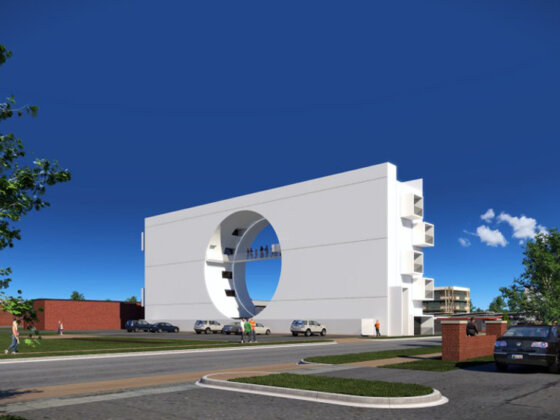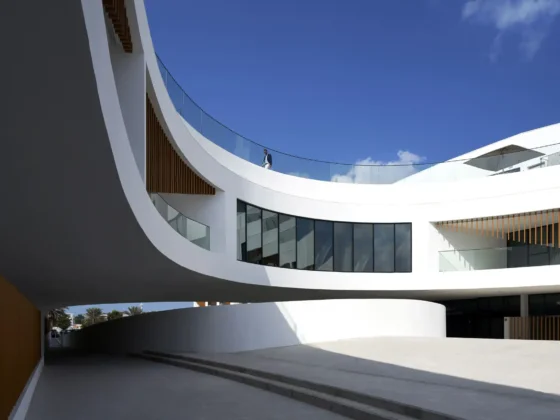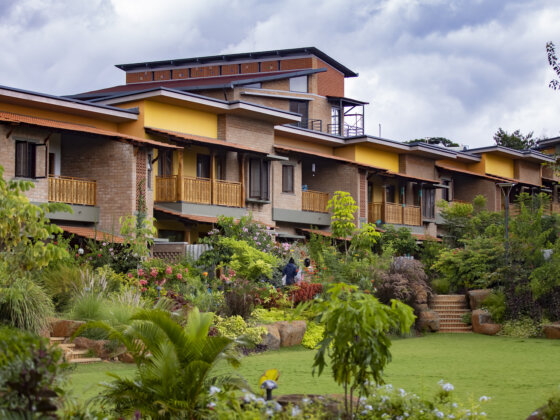London, United Kingdom
Specialized in conceptual architecture, London and Oslo-based Studio BUA has renovated a derelict concrete barn, built in 1937, and transforms it into an impressive artist’s studio, preserving the existing barn structure and adding some contemporary elements that would transform it into a livable space.

“The home needed to be robust on the outside as well as the inside. This is because of the harsh climate and also based on the capabilities of local craftsmen and the remote location. The interior color scheme is inspired by the surrounding nature, reds and greens of the seaweed, the violet and yellow in the grass in late summer, the green/grey/blues of the sea….the color of the sky… all ever-changing,” reveals Studio Bua Co-Founder Sigrún Sumarliðadóttir.

“For many years, the client searched for a remote place with a view before settling on this location. The once old and ruined concrete barn has become a shelter away from the harsh environment,” says Studio Bua.
“The land was previously occupied by a fragmented cluster of buildings, each with a specific character and in various states of disrepair.”
The rural site is surrounded by mountains, meadows, a fjord, and the sea beyond, allowing the building to be exposed to extreme weather and temperatures.

The architectural team took pebbles from a nearby beach and cast them into the interior concrete stairs.
They were also used as a way to finish the concrete reparations of the old exterior concrete wall.
Meanwhile, a new timber volume clad in corrugated industrial Aluzinc helps to embody the required lightness for the interior.

The main challenge for the architects was to find the right balance between a workspace and a family home.
At the same time, the interiors needed to be neutral, clean, and comfortable enough to display works of art, but also flexible enough to host a family and guests.

The studio conceived the renovation and the whole structure as “a piece of art.”
The structure emerges as a modest and aesthetic combination that blends the old with the new.

The main scope of the architects was to preserve as much of the existing concrete structure as possible in order to preserve the barn’s unique character and make use of the fit-for-purpose elements.
While the main part of the existing structure was built from thick and sturdy mass concrete, a new addition is distinguished with its material made of corrugated metal and steel roof.

The studio retains the beautifully ruined, foundation-free perimeter walls, enclosing a new walled garden where flowers, vegetables, and herbs can be grown.
The team integrated the local landscape into the design where possible, with pebbles and volcanic sand from the beach used to fill holes in the existing structure.

The architects wrapped the new timber volume with corrugated industrial Aluzinc (a material that is able to withstand extreme weather), and according to the studio, “this embodies the lightness of the inserted volume.”
In addition, the team manufactured all cladding, roofing, flashing, and downpipes on-site to allow the house to become very efficient and sustainable.

They also installed a ground source heat pump, along with low-temperature underfloor heating and triple glazing on all the windows.
In order not to damage the existing reinforced structure, the studio added only two new openings to the ground floor.

The interiors’ material palette was inspired by the colors found in the surrounding nature, the official explained. According to the architects, “there is sophistication and control in the interior that contrasts vastly with the wild outdoors.”




Project: Hlöðuberg Artist’s Studio
Architects: Studio Bua
Lead Architect: Sigrún Sumarliðadóttir
Client: Gudrun Kristjansdottir
Photographers: Marino Thorlacius













